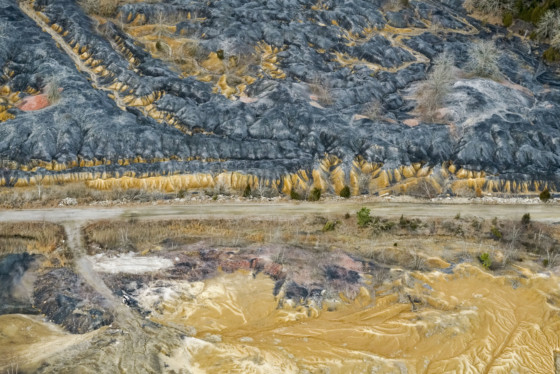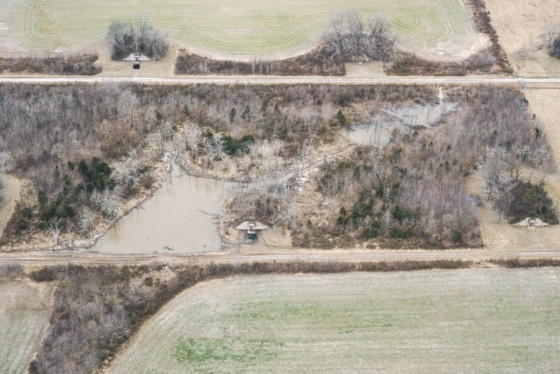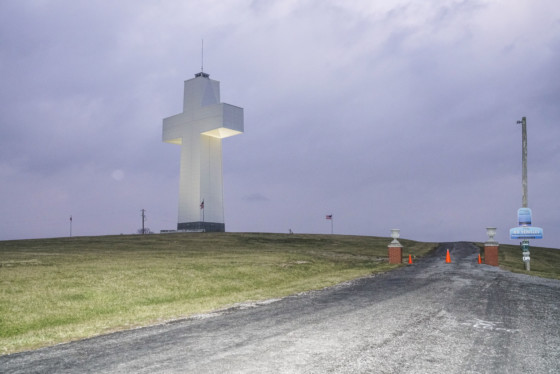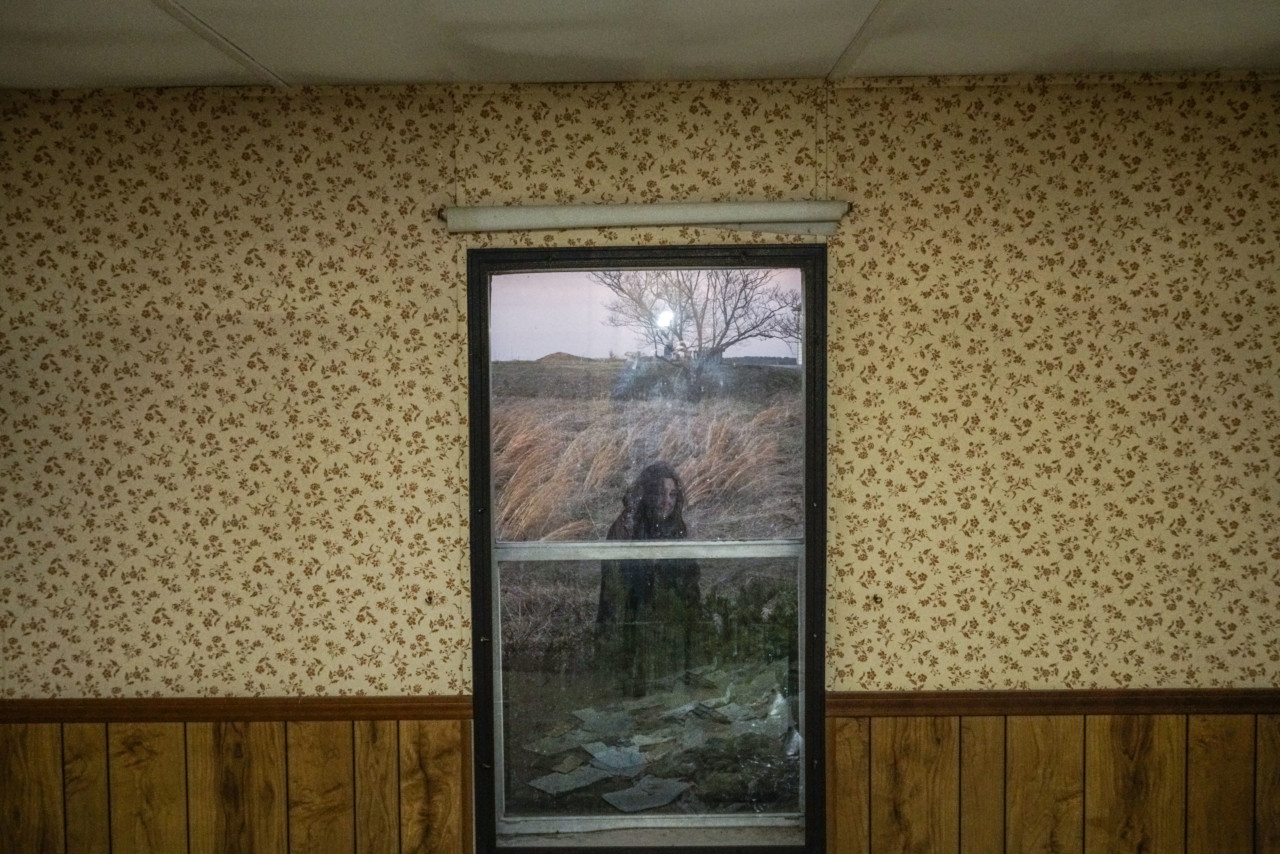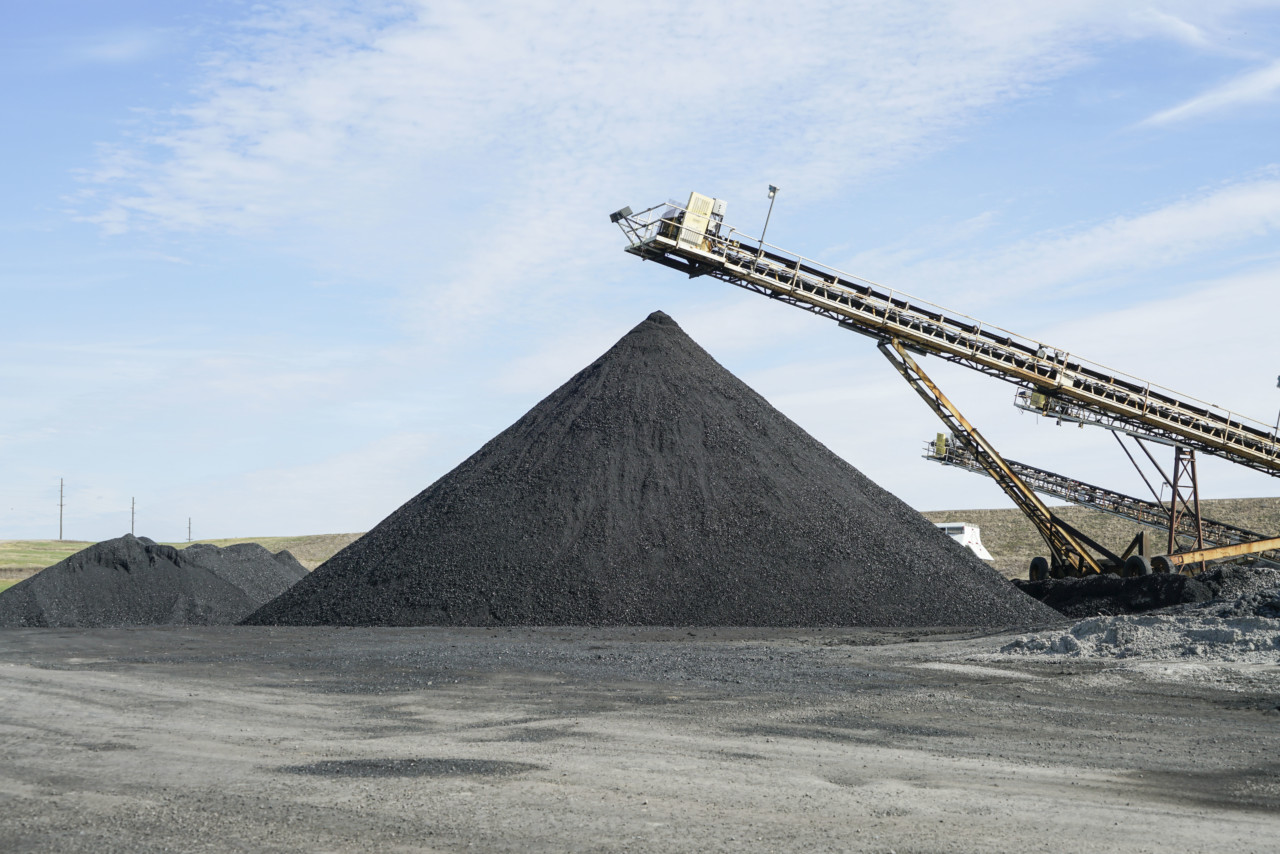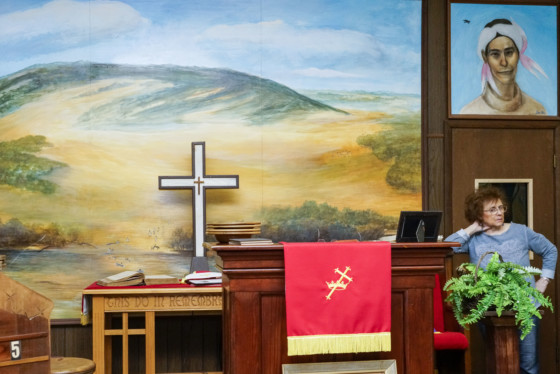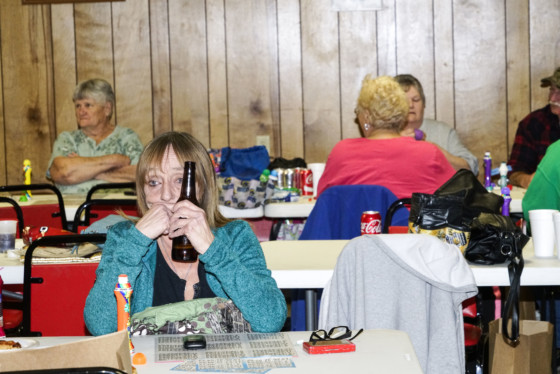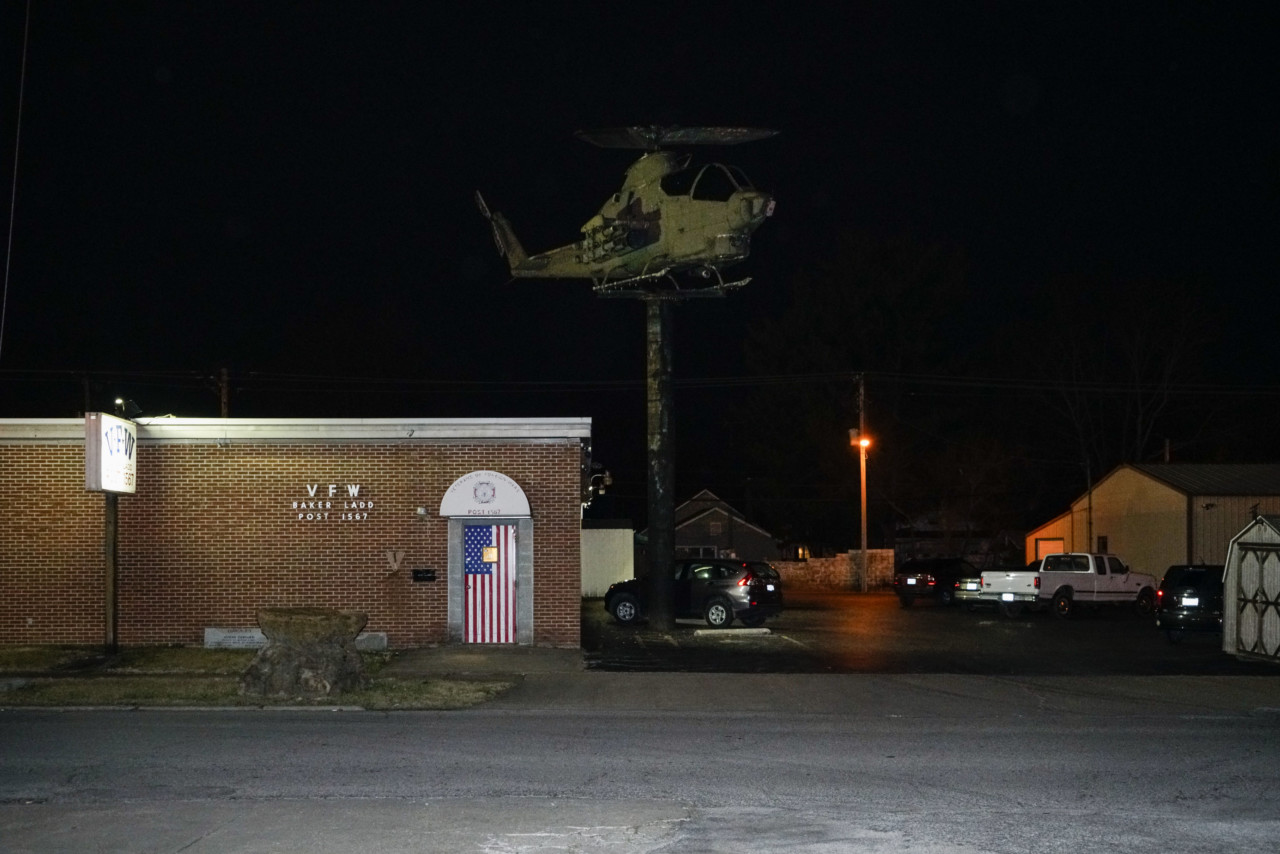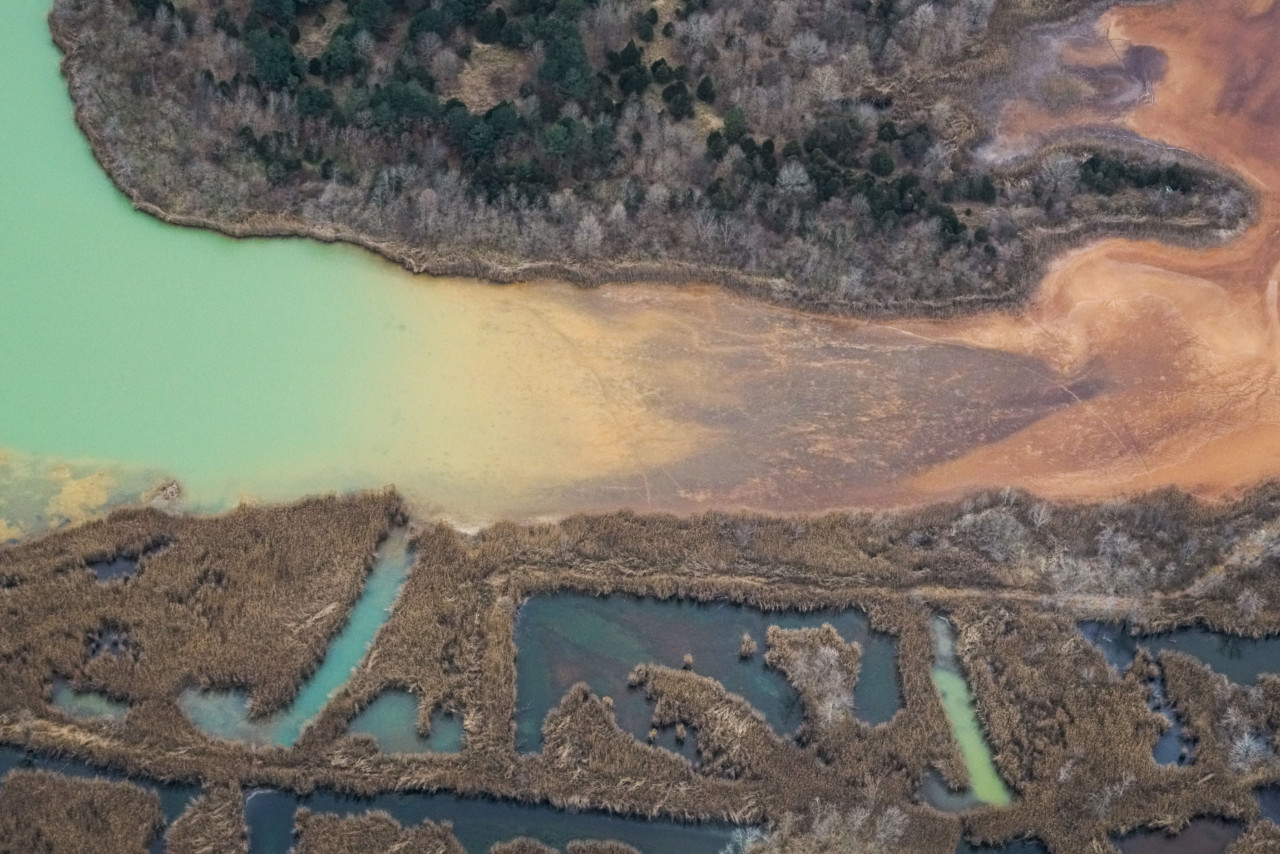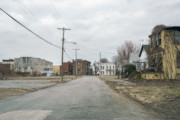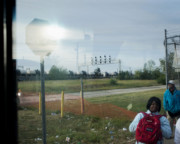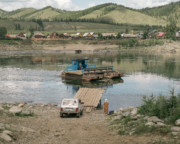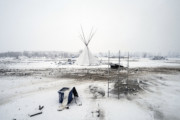Power Down: The Former Mining Towns of Illinois
Peter van Agtmael explores coal as a symbol of the current political climate in the United States
The hum of a thriving industrial town is heard not just in the white noise of heavy machinery providing the background music to everyday life, but it is also in the buzz of the people, the businesses they set up, the sports teams they play in, the schools their children go to and the streets they fill. But when industry declines what becomes of the towns? Trump’s promises to peel back green legislation suggest a possible revival of the coal industry in the United States, but will the formerly booming coal-mining towns ever recapture their sparkle? In a recent trip to former mining towns in Illinois – the state where coal was first discovered along what would become the Ilinois River – Peter van Agtmael took a portrait of an area not only at the centre of this debate, but is symbolic of the current political climate in the United States. The photo essay originally appeared as “Burn Out” in Pacific Standard, our editorial partner for this project and whose July 2017 issue is a collaboration with Magnum Photos.
The work is split between aerial shots of the vastness of the land, where natural beauty meets damage, and portraits of residents, capturing the bleak expressions on their faces. What did you want to capture in this photo essay?
Most of the mining sites are protective and wary of the press, so photographing them by helicopter was the best – and only – means to capture the scale of the damage. Photographing from the ground level can sometimes be more visceral, but the limitations of what a camera can frame from so low to the ground makes it much more difficult to capture a sense of vastness.
I didn’t necessarily set out to capture bleak portraits – and only some I’d consider bleak – but there was a feeling in those towns of uncertainty and unease that was written on many of the faces I came across.
"...coal mining is a potent symbol of our current political climate"
- Peter van Agtmael
You not only photographed the landscapes shaped by coal mining, but the businesses and communities that rely on it as well. With the mining industry not as thriving as it once was, what sense is there amongst locals that their town and their lives perhaps also used to be better?
Coal has been on the decline for decades. There have been occasional spikes in consumption but the trend has run steadily downwards. Technology has rapidly mechanized the extraction process, new coal sources domestically and abroad have been developed (while demand has dropped), renewable energy sources have become much cheaper and more efficient. I very much got the sense that people felt that their lives were better before. Indeed, it is written all over the landscape of the towns. You can see a lot of faded majestic buildings and empty store fronts of what were once clearly prosperous places. Coal mining is one of the most lucrative blue collar jobs, but the number of miners is a fraction of before.
On the other hand, were there any glimmers of optimism? Have Trump’s vows to reopen coal mines given people any hope?
I would say there was some cautious optimism. Although most people were pragmatic that coal would never fully bounce back – indeed it has been in decline through both Democratic and Republican administrations – they felt that the EPA regulations under Obama were too strict to allow coal companies to maintain a healthy profit margin. The reports I’ve read about the economics of the industry suggest this conclusion is a byproduct more of consistent exposure to anti-Obama propaganda than a result of unsentimental thinking.
Certainly there seemed to be little love for Obama amongst many of the folks I spoke with. It is troubling to note that I heard more nakedly racist commentary during that trip than just about any other trip through America – excluding the work I’ve done documenting openly racist organizations – and I’ve spent ten years working in all fifty states. But, of course, like any area in America, southern Illinois contains multitudes as well. I spent some time with an anti-Coal activist, Georgia de la Garza, and met some of her friends, many of whom were passionately working towards preserving the local environment and to developing new economic models so the region wasn’t wholly dependent on coal production.
"There are a lot of Americans that feel very marginalized by the center of power and wealth in this country"
- Peter van Agtmael
How does this particular project fit into your practice and does it offer an insight into where your interests are headed?
For more than ten years, I’ve been documenting social, political, environmental and historical issues in the United States. Coal mining is an intersection of all of these forces, and it was long overdue to pursue some work on the matter. Indeed, I did two further shoots in West Virginia and Pennsylvania after working on the Illinois project. For now, I am moving on to other things, but as coal mining is a potent symbol of our current political climate, I expect I’ll be back.
How does exploring coal mining communities in Illinois help in understanding the current state of the US?
Coal mining is only a small, symbolic part of the depleted state of affairs throughout the hinterlands of the United States. America failed to invest thoughtfully in itself as the forces of globalization and mechanization firmly took root in the past few decades. Instead, the abstractions and corruptions of Wall Street have become a main economic and political powerhouse, while trillions upon trillions of dollars have been wasted on the madness of our wars abroad. There are a lot of Americans that feel very marginalized by the center of power and wealth in this country, and I fear they will take increasingly desperate measures to assert themselves.





